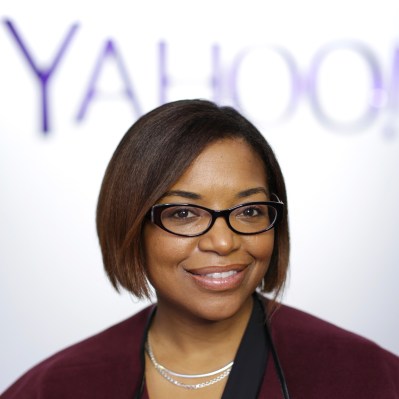Yahoo’s first diversity report in 2014 was a wake-up call for Margenett Moore-Roberts. At the time, she was working heads-down as senior director of Yahoo’s video advertising strategy and facilitating $50 million a year in revenue.
“I hadn’t looked up until our diversity report was published,” Moore-Roberts tells me. “I was surprised, to say the least. I didn’t expect to see significant numbers of blacks and Latinos. That sparked my interest in becoming more involved.”
Moore-Roberts had previously been involved with Yahoo’s employee resource group for black employees, the Yahoo Black Network, but she wanted to take her involvement up several notches. Today, Moore-Roberts has woken up and is now Yahoo’s global head of diversity and inclusion — a role she’s been in for five months now.
So far, Moore-Roberts seems to get it. She understands the impacts of systemic racism in our society, and she’s willing and able to check her own biases for the sake of the company as a whole. I’d say she’s woke. According to the highly reputable Urban Dictionary, woke means “being aware…knowing what’s going on in the community,” as it relates to racism and social injustice.
Unfortunately, Moore-Roberts’ wokeness may not make its way into Yahoo as a whole. For one, Yahoo is 62% male, 37% female, 47% white, 43% Asian, 4% Hispanic and 2% black, according to the company’s July 2015 diversity report. A lot has changed at the company since then — layoffs, most notably — so I’m eager to see Yahoo’s next diversity report, which the company “will absolutely release” this year, Moore-Roberts said. She also noted how it’s important to keep the company accountable and transparent.
“We have to be honest,” she told me. “We have to keep it real.”
While Moore-Roberts does want to improve representation at Yahoo, she noted how it’s somewhat pointless to increase the pipeline of underrepresented people coming into Yahoo if the company isn’t also working to retain them.
“It’s not a good use of energy if people are falling out of the bottom of the funnel,” Moore-Roberts. “It’s hurtful to the cause and damns the initiative to have a leaky bucket.”
Secondly, diverse representation does not automatically equal a culture of inclusiveness, yet alone one of wokeness. That’s why one of Moore-Roberts’ goals is to take a deep dive into assessing the culture at Yahoo. In doing so, she’s been doing a lot of listening and trying to figure out how to better help people understand the value of diversity — not only because it’s the right thing to do, but because it’s good for business. Over the next three months, Moore-Roberts is hoping to better understand where employees stand around issues of diversity and inclusion, and determine who “how do you activate and who do you activate,” she said. The next step is to work with the willing.
“Every one is at a different level,” Moore-Roberts said. “Other people, quite frankly, need to be convinced.”
This is a widespread problem. It’s a problem at Intel, where employees have threatened the leadership team for the company’s stance on diversity. It’s also a problem at Facebook, where employees have crossed out “Black Lives Matter.”
In order for diversity and inclusion efforts to succeed, more than one person needs to be on board, and Moore-Roberts realizes that this is not all on her. Fortunately, she says she doesn’t carry the whole weight of trying to fix this.
“As a black woman, I am very limited in what I can do, quite frankly, at a systemic level,” Moore-Roberts said.
At the same time, she recognizes that she — as does everyone else — has her own biases and baggage. She and tries to be cognizant of the potential effects those biases may have on prohibiting others to feel empowered.
At the end of the day, Moore-Roberts wants to help Yahoo tackle inclusive diversity the way it approaches other business operatives.
“The same way we went to figure out search and how to design the logo, the same level of importance and talent should be applied to [diversity],” she said.
